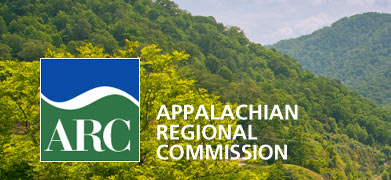Appalachian Regional Commission
 The Appalachian Regional Development Act-the first of President Lyndon B. Johnson's Great Society measures to be passed by Congress-was signed into law on 9 Mar. 1965. The act created the Appalachian Regional Commission (ARC), a federal-state-local partnership designed to help the Appalachian region emerge permanently from backwardness and poverty. The region was initially defined as all of West Virginia and parts of Alabama, Georgia, Kentucky, Maryland, North Carolina, Ohio, Pennsylvania, South Carolina, Tennessee, and Virginia; by 1967 selected counties in New York and Mississippi had been added, bringing the total to 399 counties.
The Appalachian Regional Development Act-the first of President Lyndon B. Johnson's Great Society measures to be passed by Congress-was signed into law on 9 Mar. 1965. The act created the Appalachian Regional Commission (ARC), a federal-state-local partnership designed to help the Appalachian region emerge permanently from backwardness and poverty. The region was initially defined as all of West Virginia and parts of Alabama, Georgia, Kentucky, Maryland, North Carolina, Ohio, Pennsylvania, South Carolina, Tennessee, and Virginia; by 1967 selected counties in New York and Mississippi had been added, bringing the total to 399 counties.
The primary purpose of the ARC was to assist in the preparation of coordinated economic development plans for the region, which included 29 counties in western North Carolina. The commission received special federal financial aid (in addition to other congressionally authorized and state and local funds) to help the area obtain the primary public facilities needed for economic expansion, such as roads and health facilities. The ARC also aided in restoring natural resources ravaged by neglect and misuse, such as timber and water resources and land ruined by strip mining or poor agricultural practices.
The ARC greatly influenced the economy and culture of western North Carolina. In mid-1968 Senator Sam Ervin Jr. reported that in the commission's first three years, the 29 western counties had attracted more than $68 million in facilities and services. According to Ervin, the ARC was "one of the few federal programs which recognizes that the ultimate solution of Appalachian problems lies with the economy's private sector." In North Carolina, he noted, it funded interstate highways and local access roads, high school vocational education facilities, hospital inpatient and outpatient facilities, public libraries, community colleges, industrial education centers, sewage treatment plants, and airport facilities. Later, as the funds for nonhighway or social service programs exceeded those for roads, ARC-approved grants were applied to job development programs, medical and dental care, day-care facilities, family planning information, housing improvements, and the Smart Start program of Governor James B. Hunt. By the mid-1990s, on the eve of the ARC's thirtieth year, North Carolina's Appalachian counties had received more than $351 million.
Reference:
Michael John Bradshaw, Appalachian Regional Commission: Twenty-Five Years of Government Policy (1992).
Additional Resources:
Appalachian Regional Commission official website: http://www.arc.gov/
North Carolina Appalachian Regional Commission Program Office. 2009-2012 Appalachian development plan. State of North Carolina Appalachian Regional Commission. 2009. https://digital.ncdcr.gov/Documents/Detail/2009-2012-appalachian-development-plan/3279778 (November 5, 2012).
Speer, Jean Haskell. "Appalachian Regional Commission" The Tennessee Encyclopedia of History and Culture. http://tennesseeencyclopedia.net/entry.php?rec=28 (November 5, 2012).
Ziliak, James P. "The Appalachian Regional Development Act and Economic Change." Center for Poverty Research, Department of Economics, University of Kentucky, September 16, 2010. http://www.irp.wisc.edu/newsevents/workshops/2011/participants/papers/12-Ziliak.pdf (November 5, 2012).
Alford, Roger, Doug Haddix, Mark Ferenchik, Rita Price, and Jill Riepenhoff. 1999. Appalachia: hollow promises. Columbus, Ohio: Columbus Dispatch.
Image Credits:
"arc_header_left.jpg." Appalachian Regional Commission. http://www.arc.gov/images/home/arc_header_left.jpg (November 5, 2012).
1 January 2006 | Williams, Wiley J.